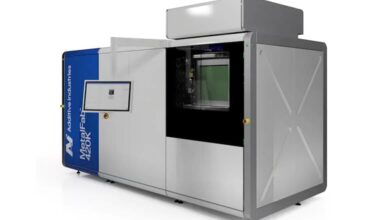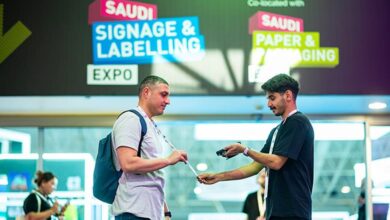FESPA Announces Exhibitor Line Up for its Inaugural Digital Corrugated Experience

FESPA has revealed more details of its Digital Corrugated Experience, which will take place at FESPA Global Print Expo 2018 from 15 to 18 May at Messe Berlin in Germany. 17 exhibitors will take part in the feature, which aims to illustrate solutions for digital printing on corrugated packaging, including file management, substrates, inks, printing technologies, varnishes and finishing. Exhibitors include: AstroNova, BCS, Color Alliance, Era Automation, EFI, ESKO, HighCon Systems Ltd., HP, Inca Digital, Kao Chimigraf, Koenig & Bauer, Kiwiplan, Lamina System, Macarbox, Sun Automation, Xante and Zund.
Throughout FESPA’s ten halls, there will be over 100 companies exhibiting products for digital corrugated printing including: Antalis International, Barbieri Electronic, Bullmer, Canon, Cartongraf, Colorgate Digital Output Solutions, Elitron, Eurolaser, Katz, KBA-Digital & Web Solutions, swissQprint and Valiani.
For the first time at a FESPA event, the Digital Corrugated Experience will feature a print ‘sample comparison’ area. Within this area visitors can compare A1 sample sheets printed with both multi- and single-pass print technology alongside an offset sample produced by BOBST. Exhibitors participating include Digital Corrugated Experience exhibitors: EFI and HP as well as Erajet, MTEX, New Solution and Noecha.
Visitors to the FESPA Digital Corrugated Experience will also have the opportunity to attend daily conference sessions from industry leading speakers including: HP, Sun Automation, ESKO and Swanline , who will share their own experiences and case studies on topics such as inks, colour management and scheduling. In addition, the News sessions will feature further information about single pass printing, digital pre- and post-print, digital cutting and creasing and retail packaging design. The daily seminars will start at 11:00h and the full programme can be found at www.corrugatedexperience.com.
Head of Events, Duncan MacOwan at FESPA comments: “We’ve received a strong level of commitment from exhibitors for the first Digital Corrugated Experience and we’re excited for FESPA 2018 visitors – both PSPs and converters – to see how they can reap the benefits of digital printing for corrugated packaging and POS displays. We’re delighted to be able to offer the sample comparison area to visitors, a first at a FESPA event, to provide them with the opportunity to compare the same file produced by different machinery manufacturers. Along with our corrugated conference offering, visitors will find plentiful support to help them explore how to take advantage of opportunities in digitally printed packaging.”
For more information on the FESPA Digital Corrugated Experience and FESPA Global Print Expo 2018 and to register to attend, visit: www.fespaglobalprintexpo.com. For free entry use code DCEM801.






You made some good points there. I did a search on the issue and found most people will consent with your site.